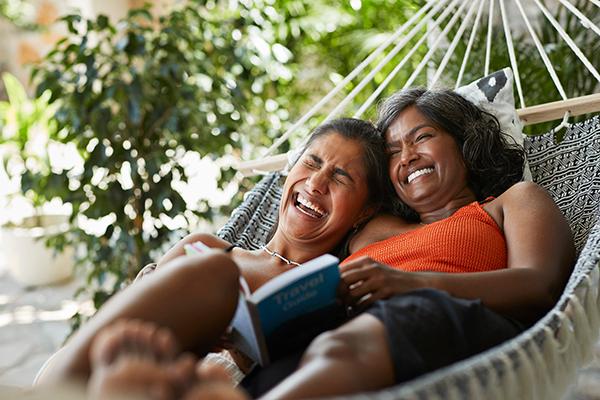World Health Day is a day of global health awareness initiated by the World Health Organization (WHO). It’s celebrated on April 7th every year and marks the anniversary of this important organization’s first assembly. The WHO was founded in 1948 on the principle that everyone should have an opportunity to reach their highest possible level of health.1 And their “health for all” initiative is the driving force behind efforts to support and inspire wellbeing around the world. It’s a resounding theme, year after year, as the organization strives to motivate and guide everyone—from individuals to policymakers—toward a commitment to better global health.
In recognition of this year’s World Health Day, Swanson Health is helping spread the word and increase awareness of the important work of the World Health Organization. We hope all our readers will take some time to get familiar with the organization and their initiatives, and join us in celebrating World Health Day on April 7th.
What Does World Health Day Mean for You?
World Health Day is a great opportunity to get involved in your community. It’s also an opportunity to consider your own health and wellness, and to look for ways you can help and inspire those around you to make healthier choices and develop habits that will positively impact their long-term wellbeing.
A great first step in any wellness plan is understanding nutrition and developing nutritional goals. While your nutritional needs will be unique to your lifestyle and overall health, the World Health Organization’s global targets for nutrition is a great place to start, and it will give you an understanding of the many challenges the organization faces in their efforts to bring wellbeing to all.
World Health Organization Global Targets
The WHO has identified global targets in many areas of health and nutrition, including nutrients essential for growth, reproduction and good health, as well as intervention targets with the goal of ending malnutrition. Here are summaries of the WHO’s nutrient targets and initiatives below.
Nutrient Targets and Related WHO Initiative Summaries
The WHO’s list of nutritional targets includes access to clean water and essential macronutrients like protein, carbohydrates and fats and fatty acids, as well as micronutrients like vitamins and minerals.2
Fiber Intake–More Fruits and Vegetables
Fruits and vegetables should be a large part of every diet. Reduced fruit and vegetable consumption is linked to a higher risk of health concerns as well as unhealthy weights.3 The WHO suggests eating more than 400 grams of fruits and vegetables each day.3
Reduced Sugar Intakes in Children and Adults
WHO initiatives include reducing consumption of sugar-sweetened beverages and free sugars intake in both adults and children to support healthier weights and better overall health.2
Fats and Fatty Acids During Pregnancy
The WHO has recognized that N-3 long-chain polyunsaturated fatty acids, also known as Omega-3 fatty acids, help regulate many important biological processes, including during pregnancy and delivery.4 Although the organization has not made specific intake amount recommendations and has stated that more research is needed, the WHO has noted that supplementation with N-3 long-chain polyunsaturated fatty acids may be associated with healthy term lengths and birth weights.4
Balanced Energy and Protein Supplementation During Pregnancy
Women’s nutrition both before and during pregnancy is vital to healthy babies. It’s important for expecting mothers to eat a diet containing balanced ratios of nutrients including energy and protein. In undernourished populations, the WHO recommends supplementation in which “protein provides less than 25% of the total energy content.”5
Vitamins and Minerals
Certain vitamins and mineral concerns are of particular importance to the WHO’s nutritional interventions, including the following:
-
- Calcium–In populations with low dietary calcium intake, daily supplementation of 1.5 grams to 2 grams of elemental calcium is recommended for pregnant women.6
- Folate–Folic acid supplementation is recommended before, during and after pregnancy, especially in areas where women are at risk of having low levels of folic acid due to their diets.2 (According to the Centers for Disease Control and Prevention, women should consume 400 micrograms of folic acid daily before and during pregnancy to ensure the baby’s proper development and growth.7)
- Iodine–Iodization of salt, as well as iodine supplementation in areas without access to iodized salt is recommended.2
- Iron–Iron supplementation is recommended for adults and children in areas where low iron levels are common, as well as during and after pregnancy.1
- Sodium–Reducing sodium intake for adults and children is recommended to promote healthy blood pressure and heart health.2
- Vitamin A–Ensuring adequate intakes of vitamin A is recommended, potentially by fortifying staple foods in areas where vitamin A deficiency is a public health concern and providing vitamin A supplementation to other groups in need, including infants, children, postpartum women, and those with health concerns that coincide with low levels of vitamin A.2
- Vitamin B-6–Vitamin B-6 is important for the health of the nervous system and several metabolic processes, but despite prior suggestions made by the organization, the WHO recommends that pregnant women focus on getting adequate amounts of vitamin B-6 from food sources instead of supplements.8
- Vitamin C–Although vitamin C has important antioxidant qualities, the WHO does not recommend vitamin C supplements for pregnant women.9
- Vitamin D–Some studies have shown that vitamin D supplements may be useful for promoting respiratory health in children10 and may promote several areas of health in infants and children that don’t get enough vitamin D from their mother’s milk or sun exposure,11 but the WHO no longer recommends vitamin D supplements for pregnant women for the purposes of improving maternal and perinatal outcomes.12
- Vitamin E– Vitamin E supplements are not recommended for improving maternal and perinatal outcomes during pregnancy, and while vitamin E supplementation may be helpful for some preterm infants, high doses are not recommended and further research is needed.9,13
- Zinc–The WHO recommends zinc to help manage the symptoms of stomach upset, and also the WHO also recognizes that zinc may promote healthy growth in children and support respiratory health, but more research is needed.14,15,16 And evidence suggests zinc may lengthen pregnancy terms in low-income settings, but zinc supplementation for pregnant women is only recommended “in the context of rigorous research.”17
- Micronutrients–Biofortification of staple crops or fortification of staple foods with micronutrients may be helpful in areas where nutrition is a health concern, and dietary supplementation with micronutrients may be helpful in certain populations but more research is needed before the WHO can make specific recommendations.2
- Multiple nutrients–The WHO is focused on balanced nutrition, supplementation when needed, and addressing malnutrition in adults and children.2
Safe Drinking Water
The WHO states that diarrhea is a leading cause of death globally for children under 5 years old. It contributes to nutritional concerns, fluid loss and a host of other health issues. Diarrhea is frequently caused by a lack of safe drinking-water, as well as poor sanitation and hygiene.18
Read more about these nutrition interventions in the WHO eLibrary of Evidence for Nutrition Actions.
A Few WHO Global Intervention Targets
The WHO has targeted the following areas of health and established concrete goals for measuring progress toward ending malnutrition in all its forms by 2025.19
Pre and Postnatal Health
Many of the WHO intervention targets are focused on prenatal and postnatal health—from breastfeeding education and complementary feeding, to nutritional counseling for pregnant mothers to support healthy growth of children.19
Iron and Folic Acid Deficiencies
Low levels of iron and folic acid are a focus during pregnancy for healthy fetal growth.19 Women who consume healthful diets with adequate folate throughout their childbearing years may reduce their risk of having a child with a birth defect of the brain or spinal cord. Sources of folate include fruits, vegetables, whole grain products, fortified cereals and dietary supplements. Check out What is Folic Acid? for more information on this important, prenatal nutrient.
Healthy Weights for Children and Adults
Healthy, balanced weight is important for all ages. The WHO targets include initiatives to support healthy weight in children and adults, and to reduce low birth weights by 30% by 2025.19
Read more about these Interventions by Global Target on the World Health Organization website.
This year the WHO is focusing on accessible health care for all humankind, which is a cornerstone initiative for helping people around the globe realize their highest level of health.
Take steps toward realizing your own highest level of health by educating yourself on optimal nutrition. You can start by reading more about some of the vitamins and nutrients mentioned above, see Amazing Alphabet Vitamins: The Six Vitamins You Need to Know, Say Hello to the Sunshine Vitamin: Top Foods High in Vitamin D and Benefits of Vitamin C and Vitamins C Types.
And keep reading the Swanson Health blog to learn more about key nutrients that impact your own health. You can also sign up for Swanson Health emails to get the latest wellness tips and deals delivered straight to your inbox.

About Lindsey Toth, MS, RD
Registered Dietitian, Swanson Health
Lindsey is a nationally recognized registered dietitian and nutritionist with a soft spot for ice cream. She empowers people to take charge of their health by finding the balance between the pleasure and nourishment in food.
Her philosophy is that you should take care of your body because it’s the only permanent home you have. It’s what inspired her to pursue a career in nutrition and, ultimately, led her to Swanson Health.
Sources
1 World Health Organization. http://www.who.int/campaigns/world-health-day/2018/campaign-essentials/en/ (Accessed 03/30/2018)
2 Nutrients. World Health Organization. http://www.who.int/elena/nutrient/en/ (Accessed 03/30/2018)
3 Increasing fruit and vegetable consumption to reduce the risk of noncommunicable diseases. http://www.who.int/elena/titles/fruit_vegetables_ncds/en/ (Accessed 04/02/2018)
4 Marine oil supplementation during pregnancy. World Health Organization. http://www.who.int/elena/titles/fish_oil_pregnancy/en/ (Accessed 04/02/2018)
5 Balanced energy and protein supplementation during pregnancy. World Health Organization. http://www.who.int/elena/titles/energy_protein_pregnancy/en/ (Accessed 04/02/2018)
6 Calcium supplementation during pregnancy to reduce the risk of pre-eclampsia. World Health Organization. http://www.who.int/elena/titles/calcium_pregnancy/en/ (Accessed 03/30/2018)
7 Folic Acid. Centers for Disease Control and Prevention. https://www.cdc.gov/ncbddd/folicacid/faqs.html (Accessed 04/02/2018)
8 vitamin B-6 supplementation during pregnancy. World Health Organization. http://www.who.int/elena/titles/vitaminb6-pregnancy/en/ (Accessed 04/02/2018)
9 Vitamin E and C supplementation during pregnancy. World Health Organization. http://www.who.int/elena/titles/vitaminsec-pregnancy/en/ (Accessed 03/30/2018)
10 Vitamin D supplementation and respiratory infections in children. World Health Organization. http://www.who.int/elena/titles/vitamind_pneumonia_children/en/ (Accessed 04/02/2018)
11 Vitamin D supplementation in infants. World Health Organization. http://www.who.int/elena/titles/vitamind_infants/en/ (Accessed 04/02/2018)
12 Vitamin D supplementation during pregnancy. World Health Organization. http://www.who.int/elena/titles/vitamind_supp_pregnancy/en/ (Accessed 04/02/2018)
13 Vitamin E supplementation for the prevention of morbidity and mortality in preterm infants. World Health Organization. http://www.who.int/elena/titles/vitamine_preterm/en/ (Accessed 04/02/2018)
14 Zinc supplementation in the management of diarrhoea. World Health Organization. http://www.who.int/elena/titles/zinc_diarrhoea/en/ (Accessed 04/02/2018)
15 Zinc supplementation in children with respiratory infections. World Health Organization. http://www.who.int/elena/titles/zinc_pneumonia_children/en/ (Accessed 04/02/2018)
16 Zinc supplementation and growth in children. World Health Organization. http://www.who.int/elena/titles/zinc_stunting/en/ (Accessed 04/02/2018)
17 Zinc supplementation during pregnancy. World Health Organization. http://www.who.int/elena/titles/zinc_pregnancy/en/ (Accessed 04/02/2018)
18 Water, sanitation and hygiene interventions to prevent diarrhoea. World Health Organization. http://www.who.int/elena/titles/wsh_diarrhoea/en/ (Accessed 04/02/2018)
19 Global Targets. World Health Organization. http://www.who.int/elena/global-targets/en/ (Accessed 04/02/2018)
*These statements have not been evaluated by the Food and Drug Administration. These products are not intended to diagnose, treat, cure or prevent any disease.




